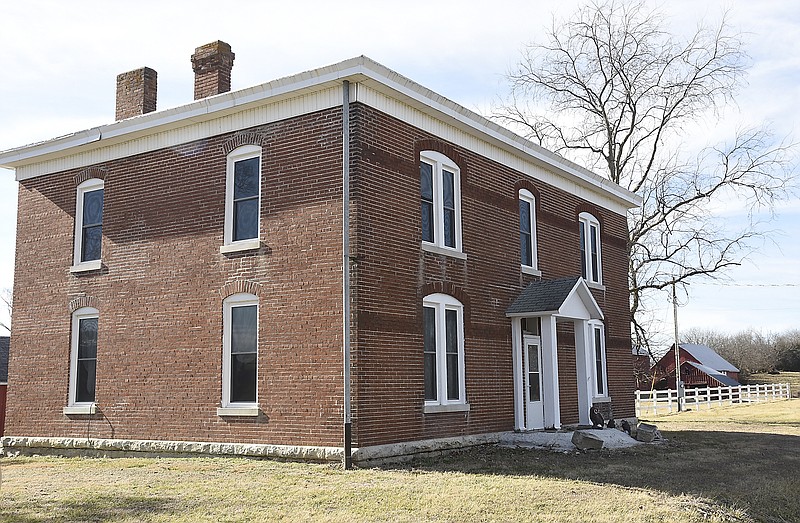MARION, Mo. - The site of Cole County's first courthouse is part of a historic farm being considered for listing on the National Register of Historic Places.
The state's advisory council met Friday to read a nomination for the second time for the Garnett Farm Historic District.
The first submission was not approved, but the state historic preservation office provided guidance to improve the nomination, said owner Rodney Garnett.
In addition to being one of the earliest settlements in Mid-Missouri, "Old Marion" was a high-volume boat landing in the first decades of statehood.
However, its most historic claim, Garnett said, may be the mention in the Corps of Discovery journals of William Clark and Meriwether Lewis for Lover's Leap, which was destroyed in 1904 with the completion of the Missouri Pacific Railroad from Jefferson City to Kansas City.
The 183-acre nominated historic district was first developed around 1821 by Daniel McKenzie, who also helped to establish the Marion community.
The property was then passed in 1860 to Phillip Ott, who owned and operated the Ott Lumber Company in Jefferson City.
The Raithel family bought the farm land, where they built three homes.
After the 1904 flood, they actually gained land when the Missouri River changed course. However, that was also the end of "Old Marion" and when "New Marion" was established.
A Garnett married a Raithel in the 1970s, and that's where the Garnett Farm Historic District got its name.
With the fourth generation living on the property, it is a Century Farm, near Marion, 13 miles northwest of Jefferson City overlooking Moniteau Creek.
Rodney Garnett grew up on this farm, milking the cows and transporting the milk to Landwehr Dairy in Jefferson City every morning before going to school.
The nominated property consists of 16 features, including the first Marion cemetery.
This cemetery was started in 1839 after the local doctor quarantined a steamship of cholera victims and designated the site for burial, Garnett said. It has about 200 interments.
Other buildings include the farmhouse, outhouse, smokehouse, wellhouse, garage, tack room, pond, bull barn, milk house, cattle barn, grain bin, silo and pole barn.
Everything but the pole barn and milk house was built before 1950. Also, the smokehouse, built in 1840, is the oldest standing structure.
The Ott family developed the property after the McKenzies. They built a bank barn in 1876 and produced wheat, corn, clover, fruits, vegetables and hay and raised horses, mules, dairy and beef cattle, and hogs.
After 1884, the Raithel-Garnett family used the land for corn, soybeans, hay, beef cattle, horses, pigs and dairy cows. In the 1940s, the family incorporated terracing.
The two-story farmhouse was built about 1890 by Frederick Raithel using brick from the farm's pond and brick recycled from the remains of an 1820s farmhouse.
"The district is a rare surviving example of an historic late 19th to mid-20th century farmstead in the vicinity of Jefferson City," the nomination said.
McKenzie and his brother were the surveyors for the land platted in 1820 with the founding of Cole County. He offered 400 acres of his land for the building of the state Capitol. He also operated the general store and managed a cargo train along the river with his brothers.
"Many don't realize the town was in consideration for the Capitol," he said.
Marion was established in 1822 and served as county seat for seven years.
Ott also operated the general store in Marion and served as postmaster. The German immigrant was robbed by pro-Southern bushwhackers during the Civil War.
Garnett said he wants to see the property listed on the National Register because of its interesting story.
The cornerstone, which directed the layout for the county seat, still lays in a field there.
"Everyone who's lived on the property has contributed to the area," Garnett said. "I'd like to get that information out there."

